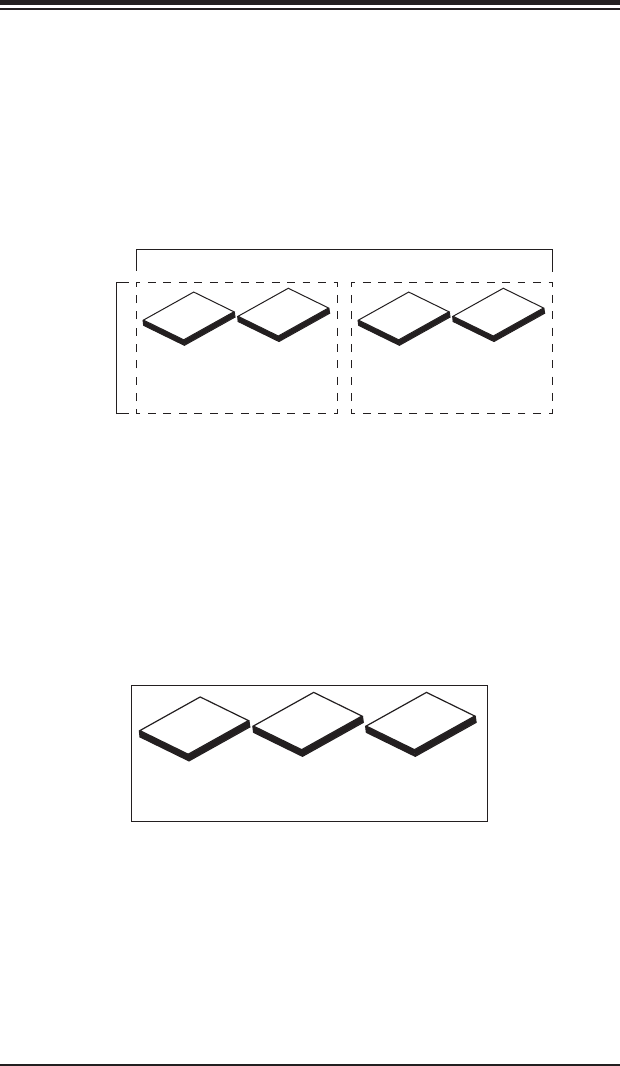
Chapter 1: Introduction to the LSI MegaRAID Software Utility
1-5
RAID 10
RAID 10, a combination of RAID 1 and RAID 0, provides superb system performance
and system security. RAID 10 mirrors small blocks of data to a series of RAID 1
drive groups. Then the rst RAID 1 drive in a drive group duplicates its data to the
second drive. RAID 10 requires a minimum of 4 drives. Any additional drives must
be be added in pairs (6 drives, 8 drives, etc). The following illustration provides a
visual example of a RAID 10 virtual drive group.
Segment 1
Segment 1
Duplicate
Segment 3
Duplicate
Segment 3
Drive A
Drive B
RAID 1
Segment 2
Segment 2
Duplicate
Segment 4
Duplicate
Segment 4
Drive C
Drive D
RAID 1
RAID 0
RAID 10
RAID 5
RAID 5 provides high data throughput by implementing block-level striping with par-
ity data distributed across all drives. A RAID 5 conguration can survive the loss of
a single drive failure because the parity drive can be used to re-create the missing
data. RAID 5 requires at least 3 drives. The following illustration provides a visual
example of a RAID 5 virtual drive group with three drives.
Segment 1
Segment 3
Parity (5,6)
Segment 2
Parity (3,4)
Segment 5
Drive A
Drive B
Parity (1,2)
Segment 4
Segment 6
Drive C
RAID 5
RAID 10 Example
RAID 5 Example


















